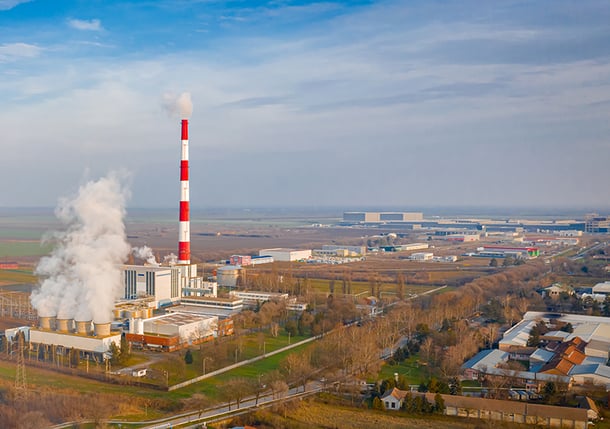In today’s industrial environments, especially at major hazard facilities (MHFs), understanding and managing risk is more important than ever. As facilities grow more complex and regulations become increasingly focused on cumulative and societal risk, Quantitative Risk Assessments (QRA) are an increasingly valuable addition to the process safety toolbox, especially for complex facilities.
But the question many operators ask is: "When is the best time to use a QRA?"
What Is a QRA, and Why Does It Matter?
A QRA is a systematic, data-driven method for quantifying the risks associated with potential hazardous events at and around a facility. Unlike scenario-based assessments that focus on individual events, QRA offers a view of cumulative risk.
QRA has sometimes had a reputation as a "black box" analysis, highly technical and hard to interpret. But when applied effectively, it offers real clarity by:
- Identifying major contributors to risk across the whole facility
- Highlighting how risks interact cumulatively, rather than in isolation
- Enabling more informed and strategic risk reduction decisions
In essence, QRA complements our existing methodologies by offering a data-driven view of risk aggregation, helping you see where to act for the greatest impact.
So, When Is the Right Time to Use a QRA?
QRA is not required for every site. However, there are clear indicators that it's time to consider one:
- When Your Facility Is Complex
If you operate a major hazard facility (MHF) with numerous systems and potential major incidents, the cumulative risk may be far higher than what’s visible from individual assessments. QRA helps quantify the overall exposure and ensure the site remains within tolerable risk thresholds.
- When You Need to Understand Risk in Aggregate
Demonstrating SFARP in Australia and New Zealand requires consideration of cumulative risk as well as individual scenarios. QRA is the tool to understand the different cumulative effects:
- Risk in aggregate – Many small risks can combine into an unacceptable overall risk
- Risk in concert – Multiple incidents triggered by a single event (e.g., earthquake then fire)
- Risk by location – Certain plant areas or roles may have disproportionately high exposure
QRA helps address all of these by mapping and quantifying risk spatially and systemically.

- When You're Planning or Reassessing Buildings
QRAs are essential tools in occupied building risk assessments (OBRA), ensuring that control rooms, offices, and shelters are located and designed to protect the people inside. (More on that in THIS BLOG.)
- When You’re Dealing with Land Use Planning or Community Risk
Councils and regulators in New Zealand and Australia frequently rely on QRA outputs to:
- Support land use planning decisions
- Assess societal risk, the likelihood of harm to people outside the fence
- Meet regulatory requirements and demonstrate ALARP
QRA is increasingly seen as a standard approach for understanding off-site risk.
Filling the Gaps in Conventional Risk Approaches
Tools like HAZOP, LOPA, and bowtie analysis are essential for identifying and managing risk at the scenario level, while QRA builds on these foundations to provide a broader, quantitative view of cumulative and societal risk. QRAs complement these methods by:
- Aggregating all risks, including those that are not directly covered by detailed bowtie scenarios
- Quantifying the combined probability and consequence of multiple independent and common-cause events
- Helping you see when risk controls are protecting against more than one scenario, delivering a cumulative benefit

|

|

|
| This INTRODUCTION TO PROCESS SAFETY online course is for all staff who work at hazardous facilities. FIND IT HERE! |
Find out more about our Quantitative Risk Assessment training course HERE! |
Prefer a face-to-face course? Find out about our next PROCESS SAFETY FOUNDATIONS course HERE! |
The Bottom Line: QRA Helps You See the Forest, Not Just the Trees
If you operate a large, complex facility with multiple potential hazards, a QRA can:
- Provide clarity on where the true risk lies
- Justify investments in multi-benefit safety improvements
- Ensure compliance with regulatory expectations around societal and cumulative risk
- Support strategic planning decisions, like where to site buildings or expand operations
QRA isn’t just a regulatory checkbox, it’s a strategic risk management tool.
At Safety Solutions, our approach to QRA demystifies the process. We use QRA to complement, not replace, our existing tools, giving clients a clear, actionable view of site-wide risk and control effectiveness.
Whether you're navigating regulatory pressures, planning new infrastructure, or simply want greater confidence in your risk profile, QRA is a powerful method to ensure you're seeing the full picture.
Interested in learning whether QRA is right for your facility?
Reach out to the team at Safety Solutions HERE, we’re here to help.
Ready to take your process safety strategy to the next level?
Quantify incident frequencies and consequences with confidence. Contact us about Quantitative Risk Assessment training course. Build confidence in your facility’s risk controls. Speak to us about Safety Case Development Consulting.
Have questions or need guidance? GET IN TOUCH. We're here to help.